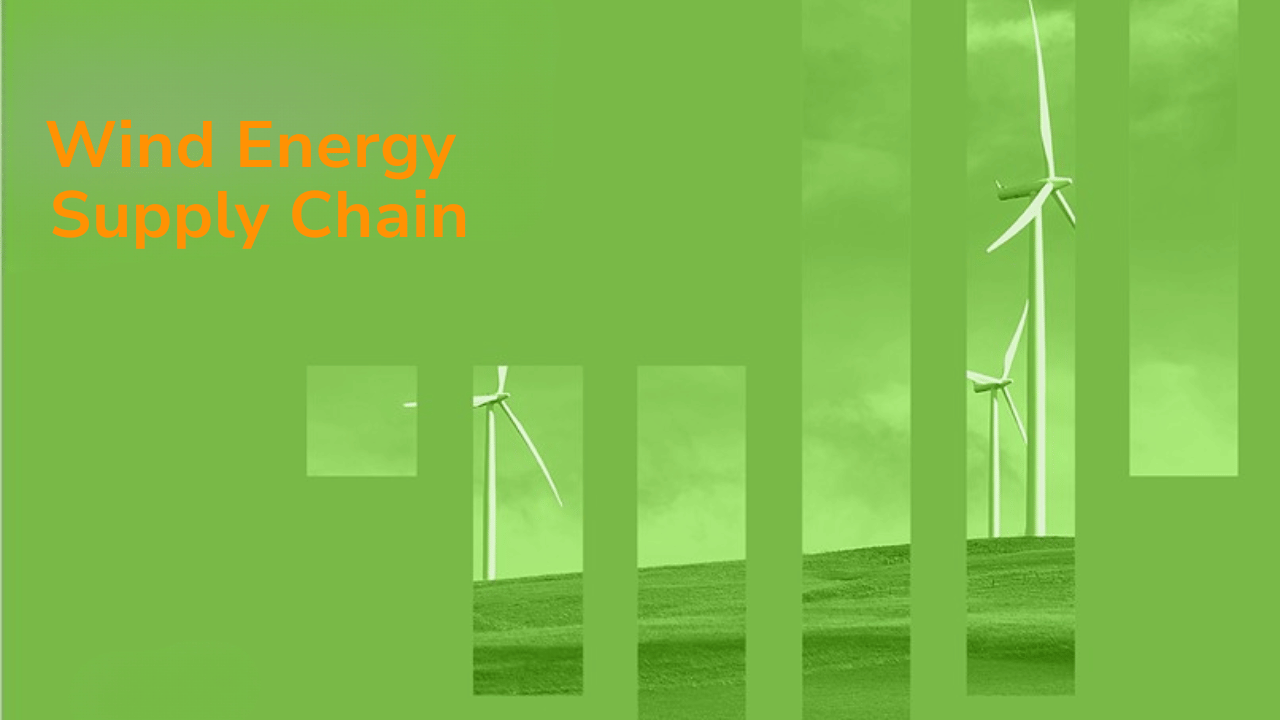A look at the UK’s wind energy map makes it clear: it’s not just about turbines and towers—it’s an entire industrial ecosystem. Renewable UK’s new Supply Chain Map and OWGP/OWIC’s Supply Chain Capability Analysis show that almost 2,000 companies are already linked to the wind sector, and seven coastal clusters are becoming centres of industry growth and jobs.

Beyond just generating electricity, this supply chain extends to ports, blade and cable manufacturing, installation services, O&M, environmental surveying, and design. If government and industry make coordinated investments, Everoze analysis says the UK could capture up to £92 billion in value by 2040—but that’s only possible if bottlenecks are addressed.
Overview Table
| Article | Map of the UK’s wind energy supply chain and areas of industrial growth |
| Published by | Renewable UK (Energy Pulse) |
| Publication Date | 23 June 2025 (Renewable UK guidance & Supply Chain map) |
| Stakeholders | UK Government, OWIC/OWGP, developers, OEMs, Tier-1 suppliers, ports, regional clusters, training providers |
| Official links used | Renewable UK (map & Energy Pulse), OWGP / OWIC Supply Chain Capability Analysis (Everoze summary), NCC/OREC article |
What the Map Shows — Geography & Clusters
Renewable UK’s mapping exercise located 1,996 supply-chain firms and showed that they are present in over 70 parliamentary constituencies across the UK. Some coastal regions—where ports, yards, and manufacturing facilities are clustered—are known as industrial clusters, where specialized capabilities for offshore wind are more concentrated.

These clusters are important because installation, assembly, cable lay-down, and maintenance infrastructure move quickly and cost-efficiently through these regions. The map gives policymakers an idea of where to ring-fence investments.
“Implementation is key, and this analysis has to be converted into action. OWIC and OWGP will now be taking the outputs of this study forwards, in collaboration with government, to develop an Industrial Growth Plan.” — OWGP/SCCA.

Where the UK Is Strong — Manufacturing & Capability
The OWGP/OWIC commissioned Everoze report (SCCA) clearly highlights some of the UK’s high-value strengths: blade manufacturing (e.g., Siemens Gamesa in Hull), cable manufacturing (JDR in Hartlepool), cable protection (Tekmar), plus specialist installation and subsea capability. Everoze concluded that if targeted interventions were made, up to £92bn GVA could be captured by 2040.
This strength is built on the existing industrial base and skilled workforce — but scale up will only happen if policy certainty, ports investment, and skills programs are challenged.

“State-of-the-art factories in the UK, such as Siemens Gamesa in Hull and Vestas on the Isle of Wight, as well as JDR Cables in Hartlepool and Tekmar in Newton Aycliffe, are just some examples.” — OWGP/SCCA.
Bottlenecks & Risks — Where are Roadblocks?
The report also identified some clear threats and bottlenecks: limited specialized manufacturing floor space, port and quayside capacity constraints, supply chain capacity to scale quickly, and the need for more coordinated regional industrial plans. If these bottlenecks are not addressed timely, projects could face delays and cost escalation.

OWGP recommends developing an Industrial Growth Plan – one that includes investment priorities, a skills pipeline, and export opportunities.
Snapshot Table
| Indicator | Value/Notes | Source |
| Supply-chain companies mapped | 1,996 UK companies | Renewable UK map |
| Parliamentary constituencies with supply-chain presence | 70+ constituencies | Renewable UK map |
| Coastal industrial clusters | 7 clusters highlighted for offshore wind servicing | Renewable UK map |
| Potential UK GVA from offshore wind supply chain to 2040 | £92 billion (with targeted interventions) | OWGP / SCCA (Everoze) |
| Examples of UK manufacturing capability | Siemens Gamesa (Hull), Vestas (Isle of Wight), JDR Cables (Hartlepool), Tekmar (Newton Aycliffe) | OWGP / SCCA (Everoze) |
| Key recommendation | Develop an Industrial Growth Plan to convert analysis into action | OWGP / SCCA (Everoze) |
Policy & Industry Actions – What should be done
Some recommended actions that SCCA and Renewable UK highlight:
- Develop a coordinated Industrial Growth Plan (government + industry).
- Prioritize investment in ports and quayside to service assembly and installation.
- Support cluster development so regional specializations can scale (e.g., blade hubs, cable hubs).
- Boost skills & training to meet O&M and manufacturing needs.
- Encourage supply chain collaboration to reduce bottlenecks and improve productivity.
The NCC/OREC commentary also emphasizes that coordinated national action can turn regional strengths into export opportunities.
“The map also charts the growth of the wind industry’s workforce, following publication of a new report which shows that the number of people working in the sector now stands at over 55,000.” — RenewableUK (Supply Chain Map).
What This Means for Jobs & Local Economies
The map shows that wind supply chain jobs are expanding across multiple regions of the UK — meaning local economies near ports and industrial clusters will see employment, apprenticeships, and supplier opportunities. The SCCA analysis links supply chain strengthening to large GVA gains and export potential — if the UK builds manufacturing scale, it can serve global markets too.
Quotes
“The map highlights the locations of the industry’s 1,996 supply chain companies, with a significant presence in over 70 parliamentary constituencies.”
“The analysis shows that the UK supply chain can capture £92 billion of economic value (Gross Value Add) by 2040 if the right actions are taken.”
FAQs
1: How many companies have been included in the map?
1,996 supply-chain companies.
2: How much economic value can be gained from the UK supply chain?
Up to £92 billion GVA by 2040 with targeted actions.
3: Which regions have important clusters?
Seven coastal regions highlighted — ports and adjacent manufacturing hubs.
4: What is the biggest bottleneck?
Ports/quayside capacity, specialized manufacturing floor space, and coordinated industrial plan.
5: What should be the next step?
Develop and implement an Industrial Growth Plan (government + industry) focusing on ports, clusters, supply-chain productivity and skills.

